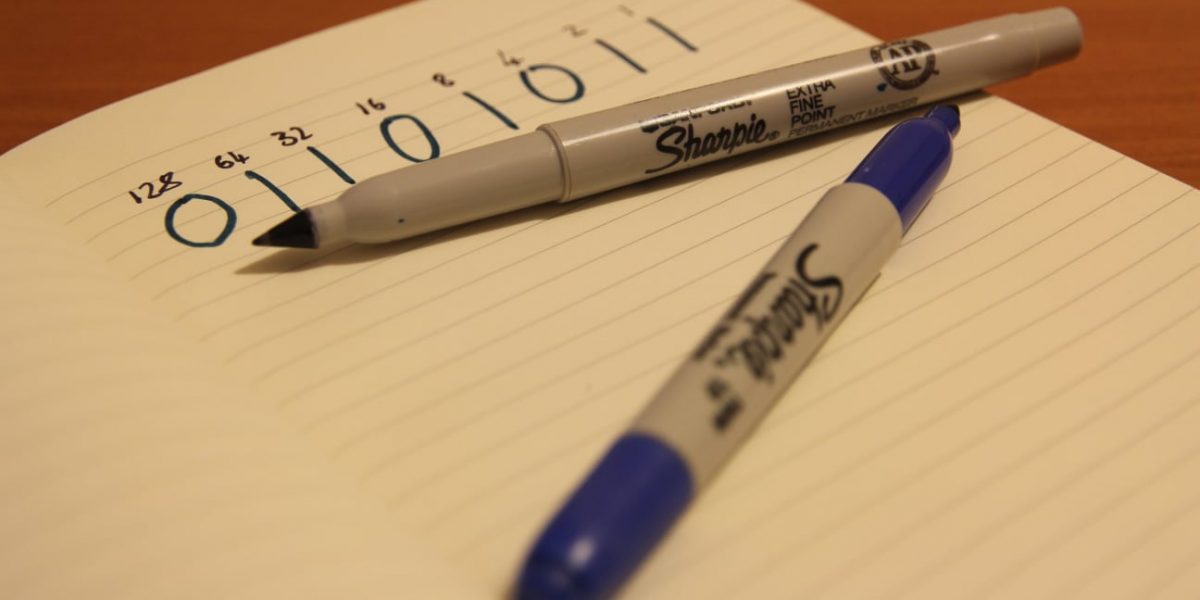Converting from binary to denary, and from denary to binary, is a quick and easy process that only requires very basic mathematical knowledge and skills. There are a few ways to these conversions; the techniques below are the simplest and most reliable for most people.
Converting from binary to denary
The process is as follows:
- Write a small 1 above the rightmost bit.
- Moving from right to left, write numbers above each bit, doubling the value every time. It should look like this:

If the binary value is more than eight digits in length, keep writing the numbers, doubling the value every time (i.e. 256, 128, 512, etc.); the exam board could ask you to work with numbers as long as 16 bits in length. - Add up the numbers above every bit that’s a ‘1’ (in this case, 64 + 32 + 4 + 2 = 102). The total is the denary value.
Converting from denary to binary
The process is essentially the reverse:
- Write the numbers above every bit, just as you did before.
- Find the bit with the number value that’s less than or equal to the denary value.
- Write a ‘1’ in that column and subtract that value from your denary.
- Repeat this process until your denary is 0.
- Fill all the remaining bits with ‘0’s.
